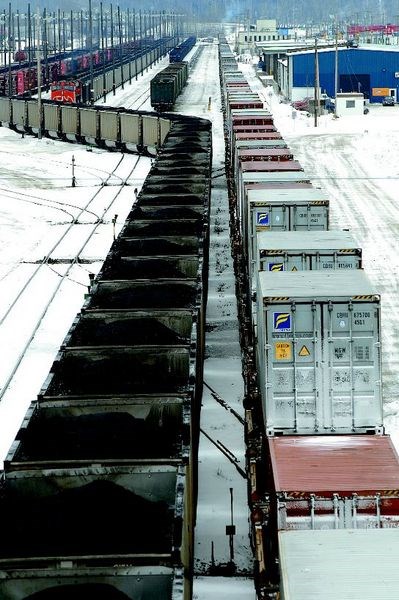Traffic through the Port of Prince Rupert increased in 2009 despite a global economic recession with a 15 per cent increase in tonnage, half of that coming from a jump in cargo through its fledgling container terminal.
The cargo terminal handled 265,259 20-foot-equivalent containers, a 45.9 per cent increase over 2008. That's still about half of the terminal's capacity, which handled its first container in fall of 2007.
The cargo terminal is viewed as another transportation gateway between Asia and North America, and touted as having benefits for the northern B.C. corridor including Prince George where CN has a container-handling facility.
Other lines of port business that saw increases included grain (up 55.8 per cent), coking coal (108.7 per cent), petroleum coke (46.4 per cent), wood pellets (108.7 per cent) and logs (79.6 per cent). The port also handles metallurgical coal, barley , canola and grain pellets.
"We are confident that the Port of Prince Rupert and our partners, including CN, Maher Terminals, longshore workers and the shipping lines, have demonstrated the competitive advantages of the Port of Prince Rupert as a gateway for transpacific container trade," said Prince Rupert Port Authority president and CEO Don Krusel. "Our continued growth reflects the increasing confidence and satisfaction of our customers with the quality of service they are receiving through the Prince Rupert Gateway."
In its cruise business, passenger traffic was down 46.8 per cent as a result of the loss of a weekly cruise vessel port of call. In 2009, the port had 31 cruise vessel visits last year with 55,097 guests, compared to 103,630 guests on 63 vessels the year before.
Krusel said the the port remains focused on growing container volumes and working on its phase 2 expansion plan, which is meant to increase container-handling capacity to 2 million 20-foot-equivalent containers
This expansion is also viewed as a cornerstone of the Prince Rupert Gateway 2020 Initiative to develop in excess of 400 hectares of prime industrial oceanfront property adjacent to Ridley Island Industrial Park.
The initiative is meant to create export and import logistics infrastructure and services, such as container stuffing and reload, cold storage, transload and short sea shipping, to provide critical flexibility in the supply chain and greater connectivity for North American shippers.
The $170-million container port at Prince Rupert, CN's $20 million container-handling facility in Prince George and a $36-million runway extension and upgrades at the Prince George Airport are hoped to provide the underpinnings for expanded trade and economic activity along the northwest
corridor.
Through CN's cargo-handling facility in Prince George, forest products are being stuffed into containers.
Tens of millions of dollars are also being spent on road upgrades in the region.



